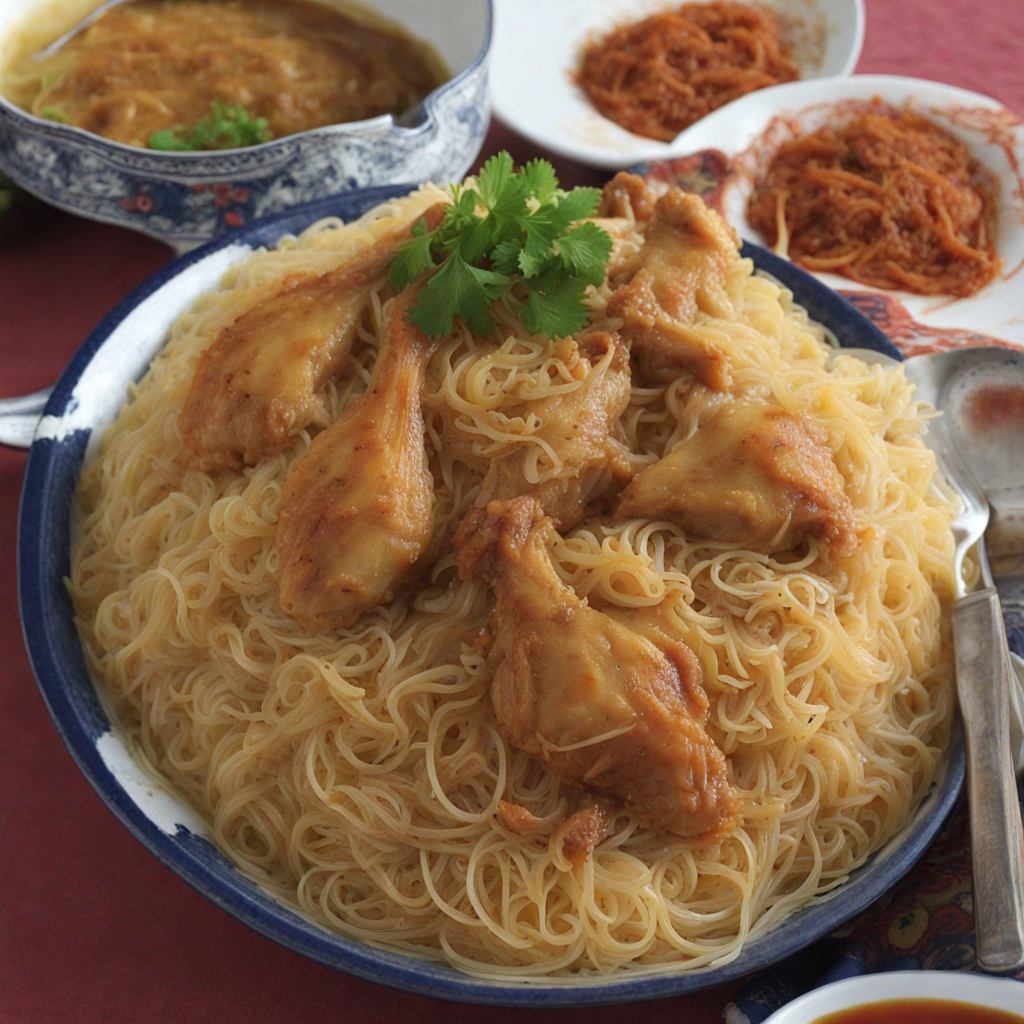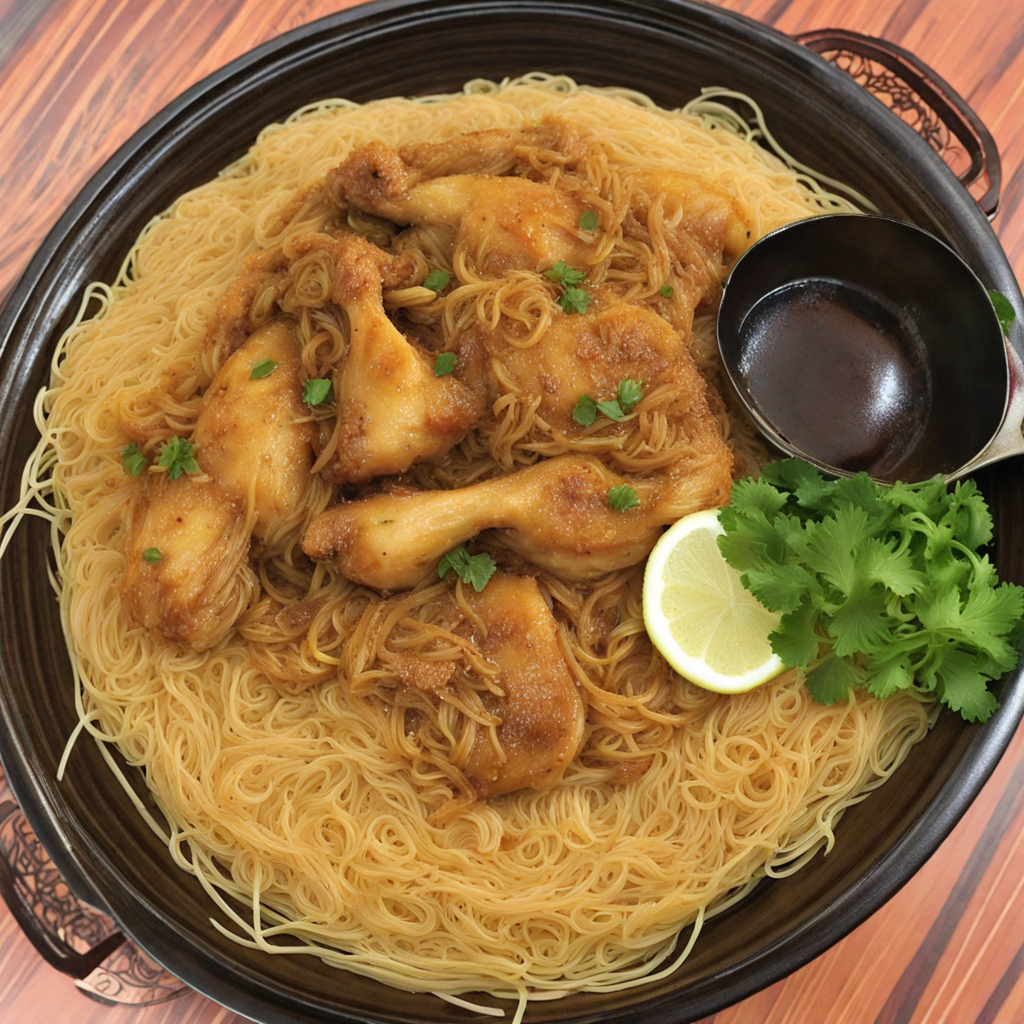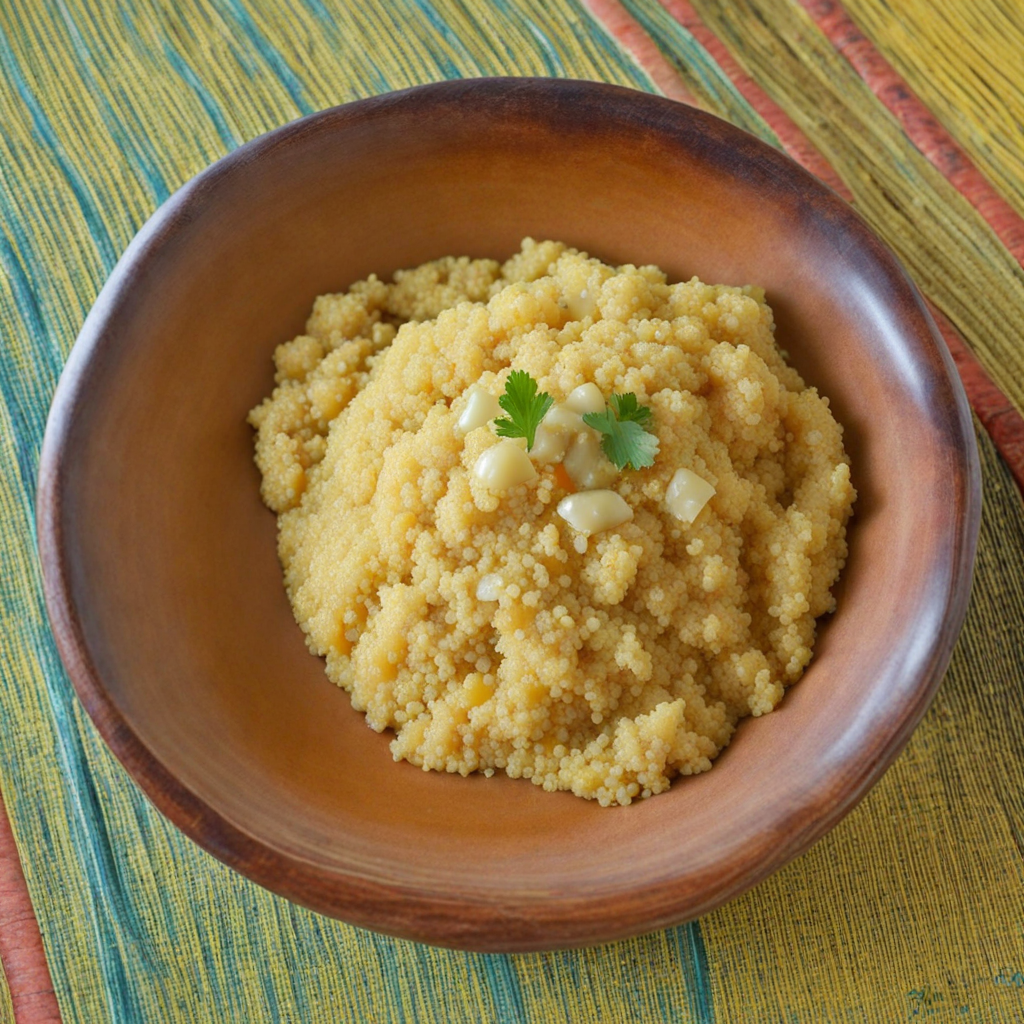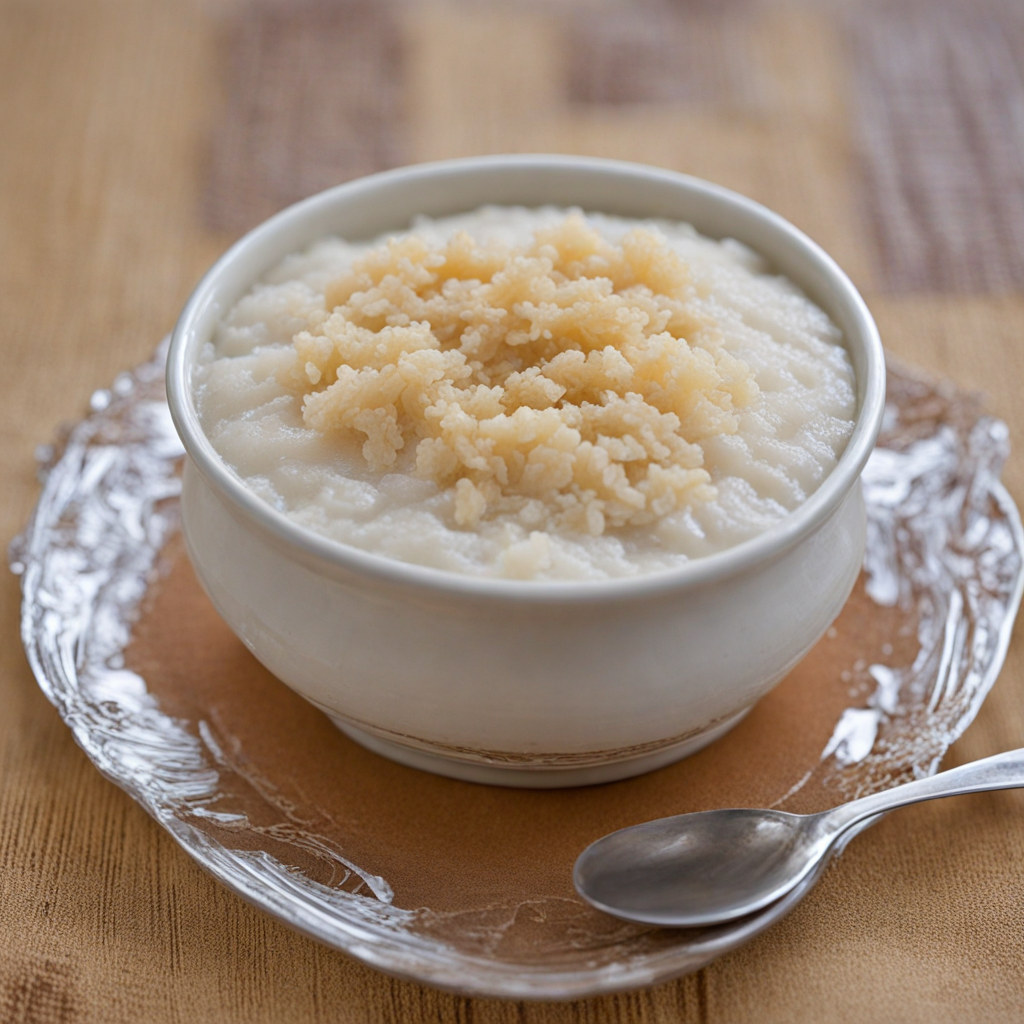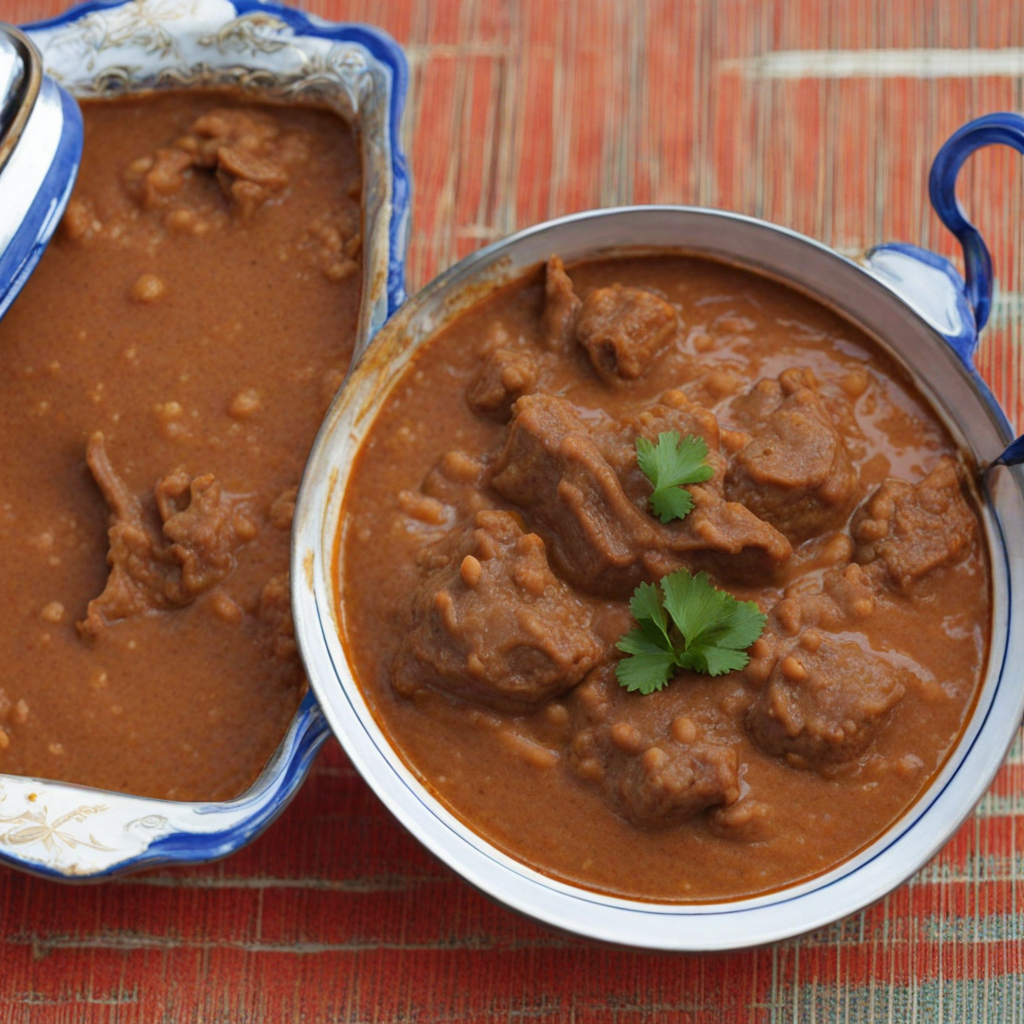Chicken Vermicelli
Chicken Vermicelli, known as "Vermicelles au Poulet" in Senegal, is a delightful dish that combines the rich flavors of tender chicken with the delicate texture of vermicelli noodles. The dish is often prepared by simmering chicken pieces in a fragrant tomato-based sauce, infused with a medley of spices such as garlic, ginger, and a hint of chili, which adds a warm, inviting heat. The chicken becomes succulent and flavorful, absorbing the essence of the sauce, while the noodles soak up the aromatic broth, creating a harmony of flavors that is both comforting and satisfying. What sets Chicken Vermicelli apart is the addition of fresh vegetables, typically including carrots, bell peppers, and onions, which not only enhance the dish's color but also contribute to its nutritional value. The vegetables are often sautéed to bring out their natural sweetness before being mixed with the chicken and sauce. This balance of ingredients ensures that each bite offers a delightful crunch alongside the soft noodles, creating a delightful contrast in textures that keeps the palate engaged. This dish is commonly served as a communal meal, embodying the Senegalese spirit of sharing and togetherness. Often accompanied by a side of spicy pepper sauce or a fresh salad, Chicken Vermicelli is perfect for those looking to explore the vibrant tastes of Senegalese cuisine. Whether enjoyed at a bustling street food stall or as a home-cooked dinner, it promises an unforgettable culinary experience that showcases the warmth and richness of Senegal's food culture.
How It Became This Dish
Poulet Yassa au Vermicelle: A Culinary Journey from Senegal #### Origin and Historical Context Poulet Yassa, a beloved dish from Senegal, embodies the rich tapestry of West African culinary traditions. Its origins can be traced back to the Wolof people, one of the largest ethnic groups in Senegal. The dish traditionally features marinated chicken, grilled to perfection and served over a bed of rice or vermicelli, with a sauce made predominantly from onions, lemon juice, and mustard. The history of Poulet Yassa is interwoven with the colonial past of Senegal, where the French presence significantly influenced local cuisine. The introduction of mustard, a key ingredient in Yassa, is believed to have come from French culinary practices. This blend of indigenous ingredients and European influences showcases the adaptability and innovation of Senegalese cooking. The marination process of the chicken in lemon juice and onions not only serves to tenderize the meat but also reflects a broader cultural practice in West Africa, where marinating is a common technique used to enhance flavors. The use of mustard adds a zesty kick that distinguishes Poulet Yassa from other chicken dishes, making it unique to the region. #### Cultural Significance Poulet Yassa is more than just a dish; it is a symbol of Senegalese hospitality and community. In Senegal, food is an integral part of social gatherings, celebrations, and rituals. Yassa is often prepared for special occasions such as weddings, religious festivities, and family reunions. The act of sharing meals is a way to strengthen bonds and foster community, and Poulet Yassa, with its vibrant flavors and communal serving style, plays a central role in these gatherings. The dish is also representative of the country's diverse culinary landscape, where influences from various ethnic groups create a mosaic of flavors and techniques. In addition to the Wolof, the Serer, Mandinka, and other ethnic communities have all contributed to the evolution of Yassa, incorporating their regional spices, cooking methods, and customs. This diversity is a testament to Senegal's cultural richness and its historical interactions with neighboring countries and foreign traders. #### The Development of Poulet Yassa Over Time As Senegal evolved through colonization, independence, and globalization, so too did Poulet Yassa. Post-independence in 1960, Senegal sought to assert its cultural identity, and food became a pillar of national pride. Traditional dishes like Poulet Yassa were celebrated as symbols of Senegalese heritage, and efforts were made to preserve these culinary practices amidst the influences of modernity. In urban centers like Dakar, the dish began to gain prominence in restaurants and eateries, bridging the gap between traditional home-cooking and contemporary dining experiences. Chefs began to experiment with variations, introducing elements like seafood or vegetables, which catered to diverse palates while still maintaining the essence of the original dish. The advent of the diaspora also played a crucial role in the evolution of Poulet Yassa. Senegalese communities abroad began to prepare and share the dish, adapting it to local ingredients while keeping the core flavors intact. This led to the emergence of new interpretations of Yassa, such as Poulet Yassa au Vermicelle, where the dish is served over a bed of vermicelli rather than the traditional rice. This variation highlights the versatility of the dish and its ability to adapt to different culinary contexts. #### Cooking Poulet Yassa au Vermicelle The preparation of Poulet Yassa au Vermicelle involves several steps, each contributing to the dish's depth of flavor. The chicken is typically marinated for several hours, or even overnight, in a mixture of lemon juice, mustard, sliced onions, garlic, and a variety of spices. This not only infuses the meat with a tangy, savory profile but also ensures that it remains juicy and tender when cooked. Once marinated, the chicken is often grilled or seared to develop a smoky flavor before being simmered in the remaining marinade. The onions, which become sweet and caramelized during cooking, are a highlight of the dish, adding a layer of sweetness that balances the acidity of the lemon and the heat of the mustard. The vermicelli, typically sautéed in a bit of oil before being cooked, serves as a light and delicate base for the chicken and sauce. The combination of the tender chicken, rich onion sauce, and the subtle texture of the vermicelli creates a harmonious dish that is both satisfying and comforting. #### Modern-Day Relevance Today, Poulet Yassa au Vermicelle remains a staple in Senegalese homes and restaurants. It is celebrated not only for its flavor but also as a dish that encapsulates the spirit of sharing and community. The rise of social media has further amplified its popularity, with food enthusiasts and travelers sharing images and recipes, thus introducing the dish to a global audience. Moreover, the dish has become emblematic of Senegalese cuisine on the world stage, often appearing in food festivals, cultural events, and culinary competitions. Chefs are increasingly highlighting Poulet Yassa in their menus, showcasing it as a dish that represents both tradition and innovation. In the context of globalization, Poulet Yassa's journey reflects broader themes of cultural exchange and adaptation. While it retains its authentic roots, the dish continues to evolve, incorporating new ingredients and techniques that resonate with contemporary tastes. #### Conclusion Poulet Yassa au Vermicelle is a vibrant representation of Senegal's culinary heritage, embodying the intersection of tradition, culture, and history. From its origins in the Wolof community to its status as a beloved dish enjoyed across Senegal and beyond, Yassa has proven to be a resilient and adaptable symbol of Senegalese identity. Its rich flavors and communal nature remind us of the power of food to connect people and preserve cultural narratives through generations. As we savor each bite of this delicious dish, we participate in a culinary legacy that has been nurtured over centuries, reflecting the spirit of Senegal and its people.
You may like
Discover local flavors from Senegal


